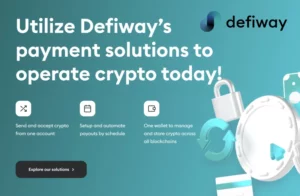
Introduction to Blockchain Scalability Issues
The advent of blockchain technology, with its promise of decentralized, secure, and immutable transactions, has revolutionized numerous industries. However, like any pioneering technology, it comes with its share of challenges. One of the most critical and widely discussed issues is that of scalability.
In the context of blockchain technology, scalability refers to the network’s capacity to handle and process a growing volume of transactions efficiently and effectively. The real challenge lies in the paradoxical relationship between decentralization, security, and scalability, often referred to as the “blockchain trilemma”. The trilemma posits that a blockchain network can excel in two areas but will inevitably compromise on the third.
Most traditional blockchains like Bitcoin and Ethereum were designed with a strong emphasis on security and decentralization. This emphasis, while pivotal to the networks’ integrity, has inadvertently restricted their scalability. This limitation is best exemplified during periods of high network congestion, where users experience slower transaction times and higher transaction fees.
The current transaction capacity of Bitcoin stands at roughly seven transactions per second (TPS), while Ethereum fares slightly better at 15 TPS. When compared to centralized financial networks like Visa, capable of handling approximately 24,000 TPS, it becomes apparent how much room for improvement there is in terms of blockchain scalability.
The issue of scalability, therefore, presents a significant hurdle to the mass adoption of blockchain technology. It has become the focus of numerous research initiatives and development projects striving to optimize blockchain networks without sacrificing their decentralization or security. The advent of Layer 2 solutions, such as the Lightning Network and Plasma, signify promising advances in this area, offering innovative ways to enhance scalability and thereby propelling the technology closer to widespread acceptance.
|
Blockchain Network/ Solution |
Transactions Per Second (TPS) |
|
Bitcoin (Main Chain) |
7 |
|
Ethereum (Main Chain) |
15 |
|
Lightning Network (Bitcoin) |
Up to Millions (theoretical) |
|
Plasma (Ethereum) |
Up to Thousands (theoretical) |
|
Visa (for reference) |
24,000 |
Table 1: Comparison of Transaction Capacity
The numbers for Lightning Network and Plasma represent ideal conditions and theoretical maximums. Real-world performance can vary based on a multitude of factors.
Understanding Layer 1 and Layer 2 Solutions
To unravel the intricacies of blockchain scalability, it’s crucial to comprehend the fundamental distinctions between Layer 1 and Layer 2 solutions. These terms refer to two different approaches for enhancing a blockchain’s capacity to process transactions.
Layer 1 solutions encompass modifications to the blockchain protocol itself, effectively changing the original rules of the network. These changes may involve increasing the block size, as seen in the Bitcoin Cash hard fork, or transitioning to a more scalable consensus mechanism, like Ethereum’s Proof of Stake. Layer 1 solutions are often more complex to implement, as they typically require network-wide agreement or a hard fork, potentially leading to fragmentation within the community.
Layer 2 solutions, on the other hand, seek to improve scalability without altering the base protocol. Instead, they function by building a secondary framework atop the existing blockchain. The core idea is to offload a significant portion of transactions from the main chain, processing them on this second layer, which is faster and more flexible. Once the transactions are finalized on the second layer, the outcome is recorded on the main blockchain, thereby ensuring security and immutability. This ‘off-chain’ approach has gained significant traction for its potential to increase transaction throughput dramatically without sacrificing the inherent advantages of the underlying blockchain.
Two of the most prominent Layer 2 solutions, the Lightning Network and Plasma, have showcased considerable potential in combating the scalability issues of Bitcoin and Ethereum, respectively. The following sections will delve deeper into these solutions, elucidating their functions, features, and implications for the future of blockchain technology.
|
Layer 1 Solutions |
Layer 2 Solutions |
|
|
Definition |
Changes to the blockchain protocol itself |
Secondary framework built on top of the existing blockchain |
|
Examples |
Increasing block size, changing consensus mechanism |
State channels, sidechains |
|
Implementation Complexity |
High (often requires network-wide agreement or hard fork) |
Lower (doesn’t require altering base protocol) |
|
Impact on Main Chain |
Direct |
Indirect |
Table 2: Layer 1 vs Layer 2 Solutions
Deep Dive into Layer 2 Scaling Solutions
As we step into the world of Layer 2 solutions, it’s essential to grasp the underlying principles that govern these innovative technologies. Layer 2 scaling solutions primarily aim to alleviate network congestion and reduce transaction fees by conducting most transactions off-chain. They leverage the security of the main blockchain, onto which only essential information is posted. In other words, Layer 2 solutions serve as an auxiliary network that facilitates faster, cheaper transactions, eventually settling the net results on the primary blockchain.
One of the fundamental concepts utilized by many Layer 2 solutions is known as ‘state channels’. A state channel is a two-way communication channel between participants which enables them to conduct unlimited transactions amongst themselves off-chain. These transactions are instant, as they don’t require block confirmations, and have minimal fees, as they don’t consume network resources. Once the participants are done transacting, they close the state channel and settle the net result on the main chain.
Another essential technique employed in Layer 2 solutions is ‘sidechains’. These are independent blockchains that run parallel to the main chain and have their own consensus mechanisms. Assets can be transferred from the main chain to the sidechain, enabling faster and cheaper transactions. Once transactions are complete, the assets can be moved back to the main chain.
Both state channels and sidechains significantly decrease the load on the main chain, enhancing the network’s overall transaction capacity. However, they each have their strengths and weaknesses, making them suitable for different applications. The succeeding sections will analyze the Lightning Network and Plasma, two Layer 2 solutions that utilize these concepts to tackle the scalability issues of Bitcoin and Ethereum, respectively.
Highlighting the Lightning Network
In response to Bitcoin’s scalability conundrum, the Lightning Network was conceptualized as a Layer 2 solution to facilitate faster, low-cost transactions. The Lightning Network leverages the concept of state channels, enabling participants to transact off-chain, bypassing the constraints of block confirmation times and network congestion.
The Lightning Network operates by creating a payment channel between two parties who wish to conduct multiple transactions. This channel is opened by creating a multi-signature wallet, which is essentially a Bitcoin wallet that requires both parties’ signatures to execute a transaction. The opening of the channel, involving the creation of the multi-signature wallet and an initial deposit of Bitcoin, is recorded on the Bitcoin blockchain.
Once the channel is open, the two parties can perform an unlimited number of transactions amongst themselves, without these transactions being recorded on the main chain. These transactions alter the distribution of the initial deposit within the multi-signature wallet, but they occur instantly and without fees, since they are not subject to block confirmations.
When the parties no longer wish to transact, they close the channel, and the final distribution of Bitcoin in the multi-signature wallet is recorded on the main chain. Importantly, only the opening and closing transactions are recorded on the blockchain, allowing for potentially thousands of off-chain transactions to occur with only two on-chain transactions.
This innovative approach promises a significant boost to Bitcoin’s scalability, supporting near-instant transactions with minimal fees. However, it’s essential to understand that the Lightning Network is best suited for small or micro-transactions, given the requirement of pre-funding channels and the potential risks associated with larger transactions.
Exploring Plasma
Plasma is another Layer 2 scaling solution, primarily designed to address the scalability issues of the Ethereum network. Conceived by Joseph Poon and Ethereum co-founder Vitalik Buterin, Plasma employs the concept of sidechains to create a hierarchical structure of interconnected blockchains, each operating independently while ultimately anchored to the Ethereum main chain.
In the Plasma framework, a parent chain (the Ethereum main chain) is connected to multiple child chains or Plasma chains, which are capable of running smart contracts and processing transactions independently. These child chains can have their own child chains, forming a tree-like structure. The key benefit of this architecture is that each chain operates independently, offloading a significant portion of transactions from the main chain, thereby enhancing scalability.
When a user wishes to interact with a Plasma chain, they first deposit their Ether or ERC-20 tokens into a smart contract on the Ethereum main chain. This smart contract acts as a bridge between the main chain and the Plasma chain. Once the deposit is confirmed, the equivalent assets are created on the Plasma chain, enabling the user to conduct transactions or interact with smart contracts at a faster pace and with lower fees.
To ensure the security and integrity of the Plasma chain, a process known as ‘Plasma exit’ is employed. This process allows users to withdraw their assets from the Plasma chain back to the main chain, even in the case of a malicious actor attempting to compromise the Plasma chain. Additionally, Plasma chains rely on a consensus mechanism called ‘Proof of Authority’, where a small number of validators are responsible for maintaining the chain’s integrity, further optimizing the chain’s performance.
By offloading much of the transactional burden from the main chain, Plasma has the potential to significantly enhance Ethereum’s scalability, paving the way for more sophisticated and resource-intensive decentralized applications (dApps) to flourish within the ecosystem.
Comparing Lightning Network and Plasma
The Lightning Network and Plasma represent two different approaches to Layer 2 scaling solutions, each tailored to the specific characteristics and requirements of their respective blockchains, Bitcoin and Ethereum.
The Lightning Network, designed for Bitcoin, utilizes state channels to facilitate off-chain transactions. It is particularly adept at handling a large volume of small transactions swiftly and economically. By allowing users to open direct payment channels between each other, the Lightning Network fosters micro-transactions and frequent, low-cost interactions, making it an ideal solution for scenarios requiring high-frequency, low-value transactions. However, it may not be as suitable for larger transactions due to the requirement of pre-funding channels and potential security risks associated with significant channel balances.
On the other hand, Plasma, designed for Ethereum, leverages a network of sidechains to offload computational workload from the main chain. This makes it exceptionally suitable for complex operations, such as those associated with decentralized applications or smart contracts. Plasma chains can handle a variety of tasks, from simple value transfers to intricate smart contract interactions. However, it’s essential to note that the robustness of Plasma comes with a degree of complexity, and the hierarchical nature of the network may introduce challenges in coordinating between multiple sidechains.
In essence, both the Lightning Network and Plasma represent significant advances in blockchain scalability, each with its strengths and ideal use cases. As Layer 2 solutions continue to evolve, it is likely that we will see more specialized implementations that cater to a diverse range of scalability requirements in the broader blockchain landscape.
|
Lightning Network |
Plasma |
|
|
Blockchain |
Bitcoin |
Ethereum |
|
Approach |
State Channels |
Sidechains |
|
Ideal Use Cases |
High-frequency, low-value transactions |
Complex operations, smart contracts |
|
Suitability for Large Transactions |
Lower due to pre-funding and security risks |
Higher due to separate sidechains |
Table 3: Comparison of Lightning Network and Plasma
Real-world Use Cases and Success Stories
Layer 2 solutions are not just theoretical constructs. They have already started to make tangible impacts in the blockchain world, demonstrating practical utility across diverse applications.
The Lightning Network has enabled micro-transactions for Bitcoin users worldwide, with thousands of nodes and channels currently active. One notable application is the social media platform, Sphinx Chat, which has integrated the Lightning Network to facilitate micro-payments for content creators. By allowing direct, low-cost payments between users and creators, Sphinx Chat is pioneering a new monetization model for social media.
In the online retail space, the payment processor OpenNode has leveraged the Lightning Network to enable instant, low-fee Bitcoin transactions. This has allowed businesses, both large and small, to accept Bitcoin payments more economically and efficiently than ever before.
A promising implementation of Plasma is Matic Network (now Polygon), which provides a scalable and flexible Layer 2 framework for Ethereum. By utilizing a variant of Plasma, Matic has managed to significantly increase transaction speed while reducing costs, making it an attractive solution for decentralized applications seeking scalability.
These success stories underscore the significant potential of Layer 2 solutions in enhancing blockchain scalability. As these technologies continue to evolve and mature, we can expect to see a wider range of use cases and more comprehensive integration into existing blockchain networks.
Future of Layer 2 Solutions
As blockchain technology continues to evolve and mature, Layer 2 solutions are poised to play an increasingly crucial role in enhancing scalability and facilitating the mass adoption of blockchain technology. The journey, however, is still in its early stages, and the landscape is ripe with opportunities for exploration and innovation.
One exciting prospect lies in the development of interoperable Layer 2 solutions that can work across different blockchain platforms. Such cross-chain Layer 2 solutions could enable seamless interactions between different blockchain ecosystems, effectively bridging isolated blockchain islands and creating a more unified and powerful blockchain network.
Additionally, the application of Layer 2 solutions in the rapidly growing field of decentralized finance (DeFi) presents a promising avenue. As DeFi platforms continue to grow in complexity and transaction volume, Layer 2 solutions could prove pivotal in handling this surge in demand without overburdening the underlying blockchain.
Furthermore, advancements in Layer 2 technologies could open the door to new applications of blockchain technology that are currently not feasible due to scalability constraints. These could range from decentralized social media platforms to global supply chain systems, potentially revolutionizing entire industries.
However, it’s important to remember that Layer 2 solutions, while promising, are not a silver bullet. Each solution comes with its trade-offs and challenges, and it’s crucial to continue exploring other avenues for improving blockchain scalability, such as Layer 1 optimizations and novel consensus algorithms.
In conclusion, the evolution of Layer 2 solutions is a critical component of the ongoing blockchain revolution. By enabling blockchains to scale efficiently and effectively, these technologies are paving the way for a future where blockchain technology is deeply integrated into the fabric of our digital lives.
- SEO Powered Content & PR Distribution. Get Amplified Today.
- PlatoAiStream. Web3 Data Intelligence. Knowledge Amplified. Access Here.
- Minting the Future w Adryenn Ashley. Access Here.
- Buy and Sell Shares in PRE-IPO Companies with PREIPO®. Access Here.
- Source: https://www.cryptocurrencyguide.org/exploring-layer-2-scaling-solutions-for-blockchain-networks/
- :has
- :is
- :not
- :where
- 000
- 1
- 15%
- 24
- 8
- 9
- a
- Accept
- acceptance
- across
- active
- acts
- Additionally
- address
- Adoption
- advancements
- advances
- advantages
- advent
- Agreement
- aim
- algorithms
- alleviate
- Allowing
- allows
- already
- amongst
- an
- analyze
- and
- Another
- any
- apparent
- Application
- applications
- Applications (DApps)
- approach
- approaches
- approximately
- architecture
- ARE
- AREA
- areas
- AS
- Assets
- associated
- At
- attempting
- attractive
- Avenue
- back
- balances
- base
- based
- BE
- become
- becomes
- before
- being
- benefit
- BEST
- Better
- between
- Bitcoin
- bitcoin and ethereum
- Bitcoin Blockchain
- Bitcoin Cash
- Bitcoin Payments
- bitcoin transactions
- Block
- Block size
- blockchain
- blockchain network
- Blockchain networks
- blockchain revolution
- blockchain scalability
- blockchain technology
- blockchains
- boost
- both
- BRIDGE
- bridging
- broader
- Building
- built
- burden
- businesses
- but
- Buterin
- by
- called
- CAN
- capable
- Capacity
- case
- cases
- Cash
- cater
- CCG
- centralized
- chain
- chains
- challenge
- challenges
- Changes
- changing
- Channel
- channels
- characteristics
- cheaper
- child
- Close
- closer
- closing
- Co-founder
- comes
- Communication
- community
- compared
- comparison
- complete
- complex
- complexity
- component
- comprehend
- comprehensive
- compromise
- conceived
- concept
- concepts
- conclusion
- conditions
- Conduct
- conducting
- confirmation
- confirmation times
- confirmations
- CONFIRMED
- congestion
- connected
- Consensus
- consensus algorithms
- consensus mechanism
- Consensus Mechanisms
- considerable
- constraints
- consume
- content
- content creators
- context
- continue
- continues
- contract
- contracts
- conundrum
- coordinating
- Core
- Costs
- could
- create
- created
- Creating
- creation
- creators
- critical
- Cross-Chain
- crucial
- Current
- Currently
- DApps
- Decentralization
- decentralized
- Decentralized Applications
- Decentralized Social
- decrease
- deeper
- DeFi
- defi platforms
- Degree
- Demand
- demonstrating
- deposit
- designed
- Development
- different
- digital
- direct
- discussed
- distribution
- diverse
- Doesn’t
- done
- Dont
- Door
- dramatically
- due
- during
- each
- Early
- ecosystem
- Ecosystems
- effectively
- efficiently
- emphasis
- employed
- employs
- enable
- enabled
- enables
- enabling
- encompass
- enhance
- enhancing
- ensure
- ensuring
- Entire
- Equivalent
- ERC-20
- essence
- essential
- essentially
- Ether
- ethereum
- ethereum network
- Ethereum's
- Even
- eventually
- EVER
- evolution
- evolve
- Excel
- exciting
- execute
- existing
- expect
- experience
- exploration
- Exploring
- fabric
- facilitate
- facilitates
- facilitating
- factors
- faster
- feasible
- Features
- Fees
- field
- final
- finalized
- financial
- First
- flexible
- flourish
- Focus
- following
- For
- fork
- fragmentation
- Framework
- frequent
- from
- function
- functions
- fundamental
- further
- future
- given
- Global
- grasp
- Grow
- Growing
- hand
- handle
- Handling
- Hard
- hard fork
- Have
- High
- High-Frequency
- higher
- How
- However
- HTTPS
- idea
- ideal
- immutability
- immutable
- Impacts
- implement
- implementation
- implications
- important
- improve
- improvement
- improving
- in
- In other
- Increase
- increasing
- increasingly
- independent
- independently
- industries
- inevitably
- information
- inherent
- initial
- initiatives
- Innovation
- innovative
- innovative technologies
- instant
- instantly
- instead
- integrated
- integration
- integrity
- interact
- interactions
- interconnected
- interoperable
- into
- intricacies
- introduce
- involve
- Islands
- isolated
- issue
- issues
- IT
- ITS
- itself
- journey
- jpg
- just
- Key
- known
- landscape
- large
- larger
- Larger transactions
- layer
- layer 1
- Layer 2
- layer 2 scaling
- leading
- Leverage
- leverages
- lies
- lightning
- Lightning Network
- like
- likely
- limitation
- Lives
- load
- longer
- low-cost
- Main
- make
- MAKES
- Making
- managed
- many
- Mass
- Mass Adoption
- Matic
- Matic Network
- mature
- May..
- mechanism
- mechanisms
- Media
- micro-payments
- millions
- minimal
- model
- Modifications
- monetization
- more
- most
- much
- multiple
- multitude
- Nature
- net
- network
- networks
- New
- no
- nodes
- notable
- novel
- now
- number
- numbers
- numerous
- of
- offering
- often
- on
- On-Chain
- once
- ONE
- ongoing
- online
- online retail
- only
- open
- opened
- opening
- Opennode
- operates
- operating
- Operations
- opportunities
- Optimize
- optimizing
- or
- original
- Other
- our
- Outcome
- overall
- own
- Pace
- Parallel
- participants
- particularly
- parties
- Paving
- payment
- Payment channels
- payment processor
- payments
- perform
- performance
- periods
- Pioneering
- pivotal
- Plasma
- platform
- Platforms
- plato
- Plato Data Intelligence
- PlatoData
- Play
- poised
- posted
- potential
- potentially
- powerful
- Practical
- presents
- primarily
- primary
- principles
- process
- processing
- Processor
- projects
- prominent
- promise
- promises
- promising
- proof
- propelling
- prospect
- protocol
- Prove
- provides
- range
- rapidly
- real
- real world
- recorded
- reduce
- reducing
- referred
- refers
- relationship
- rely
- remember
- represent
- require
- requirement
- Requirements
- requires
- research
- resource-intensive
- Resources
- respective
- respectively
- response
- responsible
- restricted
- result
- Results
- retail
- Revolution
- revolutionized
- Revolutionizing
- risks
- robustness
- Role
- Room
- roughly
- rules
- Run
- running
- sacrificing
- Scalability
- scalable
- Scale
- scaling
- Scaling Solution
- scenarios
- seamless
- Second
- secondary
- sections
- secure
- security
- security risks
- see
- Seek
- seeking
- seen
- separate
- serve
- settle
- seven
- Share
- showcased
- sidechain
- Sidechains
- Signatures
- significant
- significantly
- signify
- Silver
- Simple
- since
- Size
- small
- smart
- smart contract
- Smart Contracts
- Social
- social media
- social media platforms
- solution
- Solutions
- sophisticated
- Space
- specialized
- specific
- speed
- sphinx chat
- stages
- stands
- started
- State
- state channels
- Step
- Still
- Stories
- strengths
- strong
- structure
- subject
- success
- Success Stories
- such
- suitable
- supply
- supply chain
- Supporting
- surge
- Systems
- tackle
- tailored
- tasks
- Technologies
- Technology
- terms
- than
- that
- The
- The Block
- The Future
- The Landscape
- The Lightning Network
- The State
- the world
- their
- Them
- themselves
- theoretical
- There.
- thereby
- therefore
- These
- they
- Third
- this
- those
- thousands
- throughput
- times
- to
- Tokens
- top
- tps
- traction
- traditional
- transact
- transacting
- transaction
- Transaction Fees
- transaction speed
- transactional
- Transactions
- transactions per second
- transferred
- transfers
- transitioning
- two
- typically
- Ultimately
- underlying
- understand
- unified
- unlimited
- unravel
- use
- User
- users
- utility
- utilize
- utilized
- utilizes
- Utilizing
- validators
- value
- Variant
- variety
- visa
- vitalik
- vitalik buterin
- volume
- vs
- Wallet
- was
- Way..
- ways
- we
- were
- when
- which
- while
- WHO
- widely
- wider
- widespread
- will
- wishes
- with
- withdraw
- within
- without
- words
- Work
- world
- worldwide
- zephyrnet












